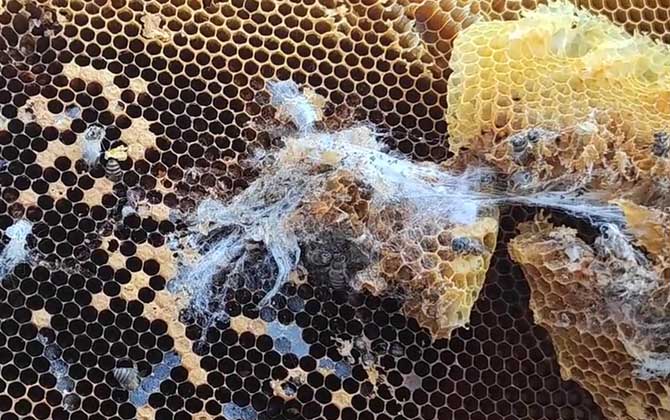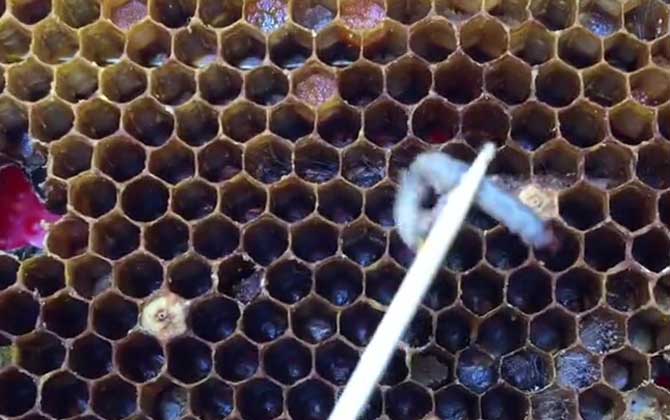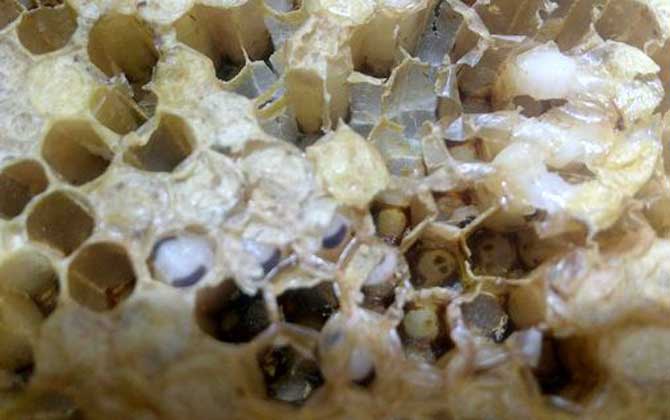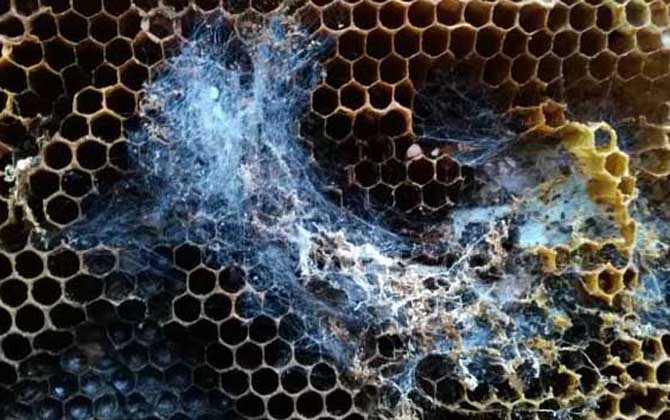Greater Wax Moth: A Major Threat to Honeybees
The Greater Wax Moth (Galleria mellonella), also known as waxworm, honeycomb moth, or bee moth, is a destructive pest in apiculture. Classified under the family Pyralidae and genus Galleria, its larvae primarily infest honeybee colonies by consuming beeswax comb structures. This pest poses significant risks to beekeeping operations, ranging from reduced honey yield and quality to complete colony collapse in severe infestations.

I. Biological Classification
| Kingdom | Animalia | Phylum | Arthropoda | Class | Insecta |
| Order | Lepidoptera | Family | Pyralidae | Genus | Galleria |
| Species | G. mellonella | Aliases | Wax Moth, Hive Worm (larva), Cotton Worm (larva), Wax Worm | ||
This cosmopolitan pest demonstrates remarkable adaptability, with its larvae capable of digesting beeswax – a trait rare among insects. The metabolic process involves specific gut enzymes that break down complex wax components into usable nutrients.

II. Morphological Characteristics
- Eggs: Oval-shaped, 0.3-0.4 mm long, with color progression from pink to yellowish-brown
- Larvae: Cream-colored upon hatching, developing grey dorsal stripes at maturity (up to 28 mm length)
- Pupae: 12-20 mm long, encased in silken cocoons
- Adults: Silver-grey moths with 30-41 mm wingspan, exhibiting sexual dimorphism (females larger)
Adult moths possess specialized scent receptors to locate bee colonies, while larvae show distinctive mandibular adaptations for wax consumption.

III. Global Distribution
While prevalent in tropical and subtropical regions (25-35° latitude), this species demonstrates remarkable thermal tolerance:
- Optimal range: 28-35°C
- Survival limits: -6.5°C to 45°C
- Major Chinese habitats: Guangdong, Yunnan, Hainan, Taiwan
- Global spread: Reported in 68 countries across six continents

IV. Life Cycle and Behavior
Developmental Stages:
| Stage | Duration | Temperature Sensitivity |
|---|---|---|
| Egg | 8-23 days | Requires >60% humidity |
| Larva | 27-48 days | Optimal: 30-35°C |
| Pupa | 9-23 days | Metamorphosis inhibitor below 15°C |
| Adult | 9-44 days | Flight activity >18°C |
Key Behavioral Patterns:
- Nocturnal mating (peak activity 20:00-23:00)
- Oviposition preference for dark crevices (200-600 eggs/female)
- Larval photophobic behavior
- Pupation in protected areas

V. Integrated Pest Management Strategies
Preventive Measures:
- Colony Strengthening:
- Maintain colonies with >30,000 worker bees
- Ensure adequate nurse bee population for larval care
- Regular queen replacement (every 1-2 years)
- Hive Maintenance:
- Weekly debris removal from hive bottoms
- Solarization treatment (exposure to 46°C for 2-4 hrs)
- Use of screened bottom boards
Control Methods:
| Method | Application | Efficacy |
|---|---|---|
| Biological Control | Bacillus thuringiensis applications | 85-90% larval mortality |
| Physical Control | Cold storage (-7°C for 4.5 hrs) | 100% lifecycle termination |
| Chemical Control | Para-dichlorobenzene crystals | Use restricted to empty hives |
Recent studies show promising results with pheromone traps achieving 70% reduction in infestation rates when combined with proper hive management techniques.